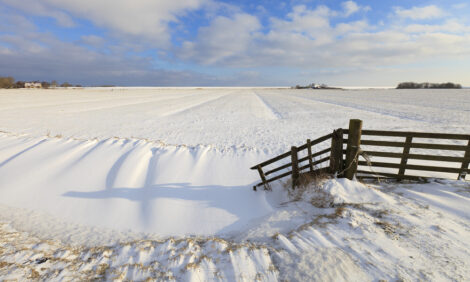



EUROTIER: Better Organic Dairy Yields Through Continuous Grassland Grazing
GERMANY - Organic dairy farmers can use continuous grazing on pasture to reduce costs and boost profits, writes Chris Harris.Speaking at EuroTier in Hanover, Stephan Schöltz from the organic organisation Naturland said that numerous studies in Switzerland and in Germany have shown that production costs can be reduced while maintaining substantial milk yields and maintaining animal health.
He said that a Swiss study by Peter Thomet had shown that organic farmers using a system of continuous pasture grazing had achieved yield of up to 14,000 kg and their yields had compared favourably with some of the top performing farms.
However, Mr Schöltz said that when farmers are changing systems from traditional intensive methods using high amounts of concentrate in the feed, the process has to be taken gradually.
He said that grazing systems in counties with large areas of pastureland such as Ireland and New Zealand have demonstrated that the systems are sustainable because they also have the lowest production costs.
In Germany, farmers wishing to change to a continuous grazing system should reduce the amount of concentrate given to the cattle gradually and ensure a targeted reduction.
He said that at first some loss of weight might be seen and there could be a drop in milk yields, but studies had also shown that the cows had above average fertility.
Mr Schöltz recommended that when using a pasture grazing system, block calving in the autumn or winter had shown best results in research trials.
"You need to have a basic feed ration during winter and the cows and the young stock need to be in the same system," Mr Schöltz said.
"Concentrate can be used to a certain extent, but you also have to use forage. You have to look at the ecology and the ethical issues."
He said that in some cases use of continuous feeding on grasslands could help to improve yields by up to 1000 litres.
However, the main savings came in the use of less machinery and equipment and the use of less concentrate and feed.
The savings can be seen in the feed because grassland has the lowest costs followed by forage, hay and then concentrate.
He also advised farmers embarking on a system of continuous grassland feeding that the best grasslands were in areas of higher rainfall and regions with low rainfall of less than 700 mm could present problems.
Stephan Köster, who runs the grazing system on his farm near Cologne, also advised a gradual reduction in the use of concentrates in the fed although he said that the amount used could be increased in winter when the cows are brought into the barns.
On his farm, he said that the amount of concentrate use averaged 185g although it increased in winter to about 300g after the cows had calved.
In winter he said that he also used a mixed feed with soybean and carrots but in spring when the cows are first turned out, the young grass is equivalent to concentrate.
Mr Köster said the cows should be turned out early in spring in mid-April to make the most of the pastureland but the grassland also needs to be correctly managed to get the best out of it.
He said the grass height needs to be measures and when it becomes too long, mowed. If the grass becomes too long its nutritional benefits are reduced and the cows' feed has to be supplemented.
He also advised that it is beneficial to feed minerals either through a lick or in feed to supplement the diet.
He added that the cows also often enjoy the mown grass but he warned that it should not be allowed to become mouldy.
Mr Schöltz concluded that constant adjustment needs to be made to the system in cow numbers and grass management to achieve full success but with the reduction in the use of equipment and feed profitable milk yields are achievable through continuous grassland grazing.
TheCattleSite News Desk


